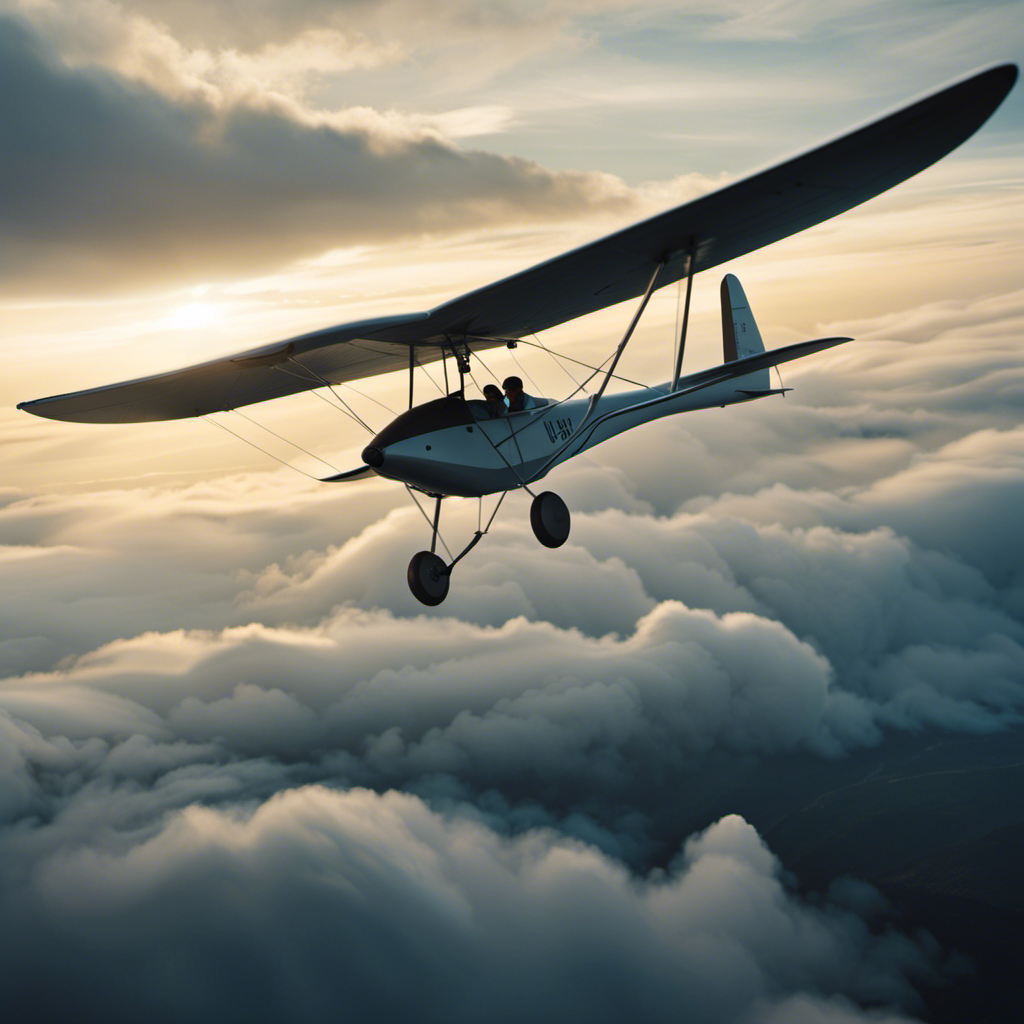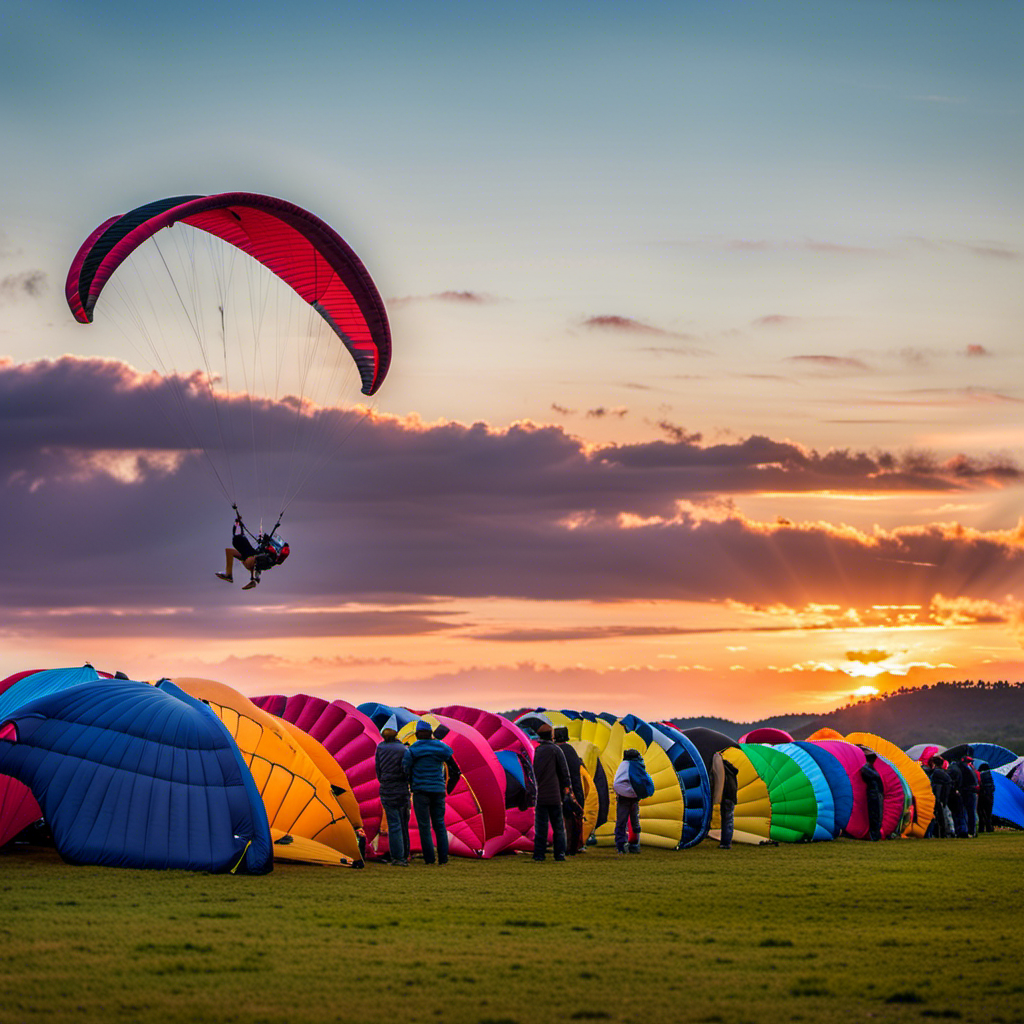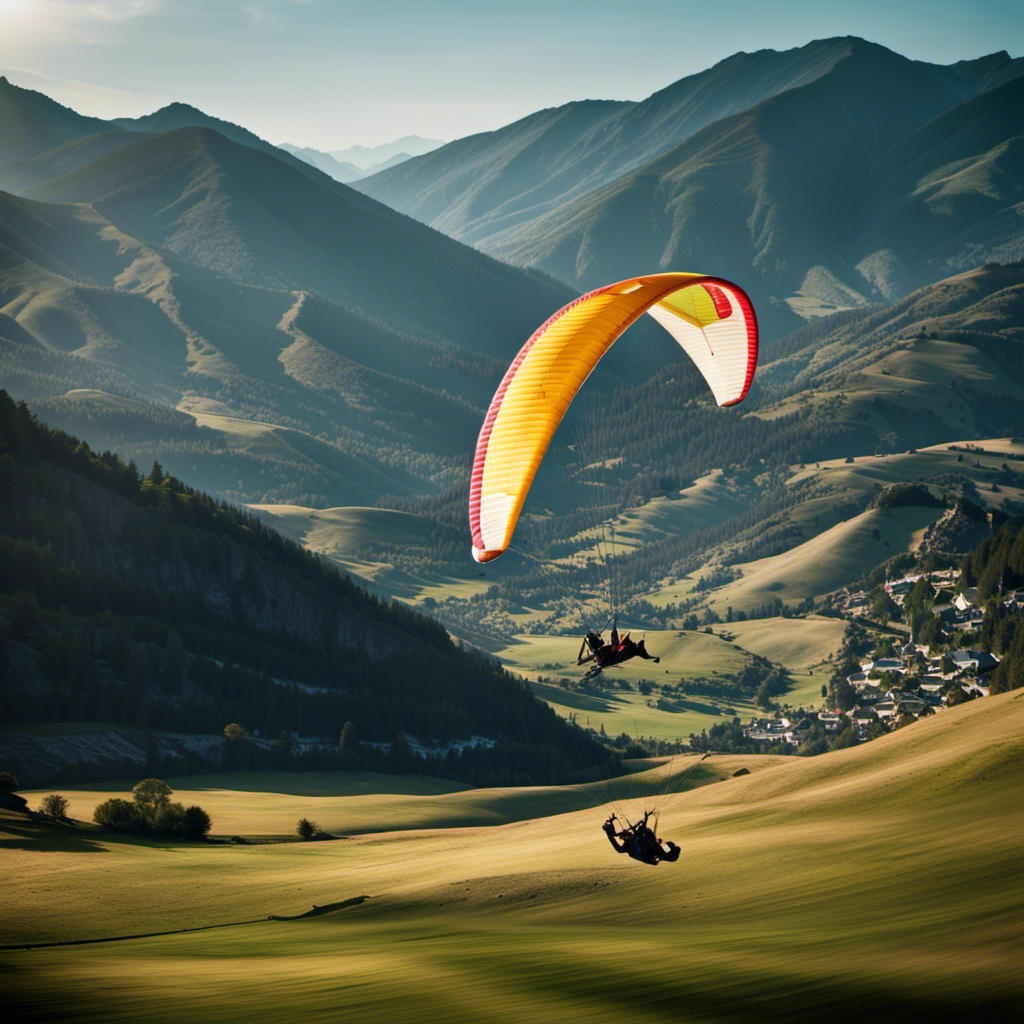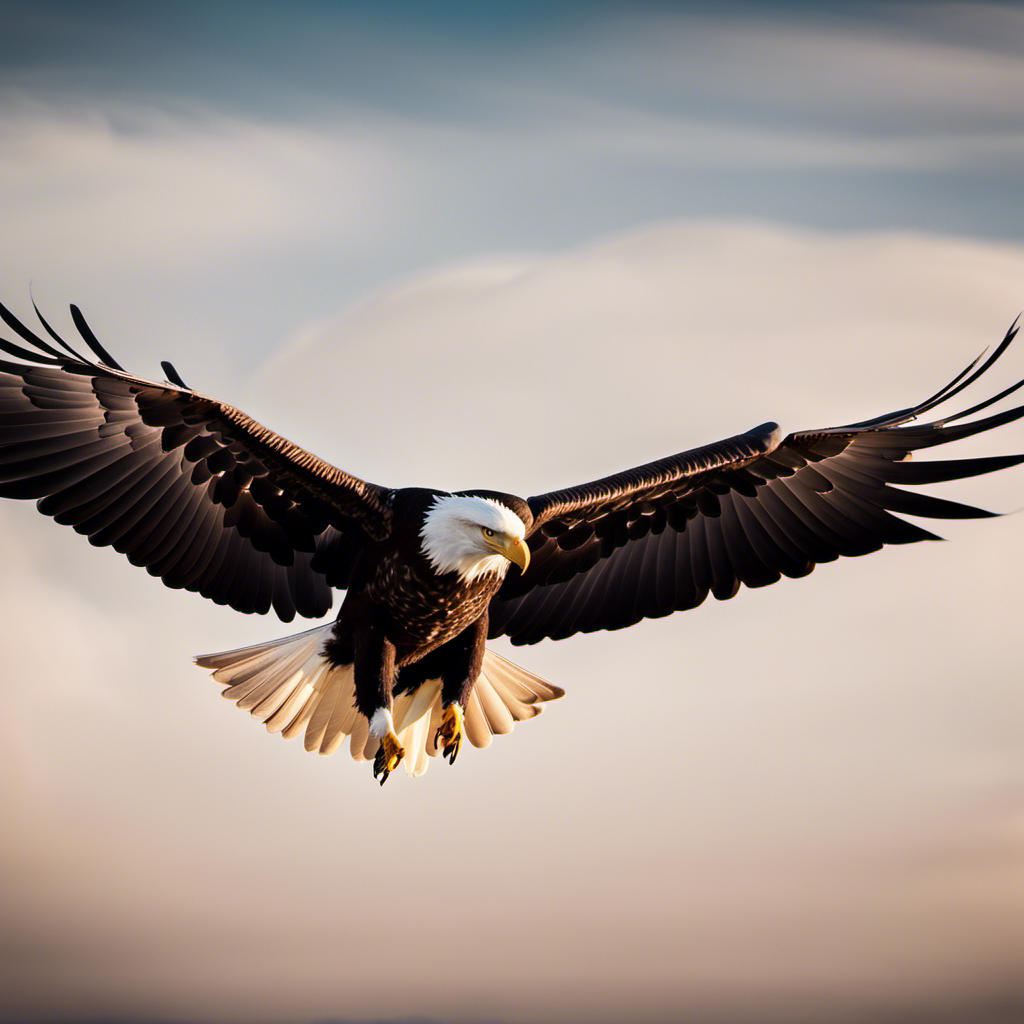Owning and operating a glider can provide an exciting adventure, but it also comes with hidden expenses that may exceed the glider’s initial cost.
In this article, I will delve into the true cost of owning and operating a glider, examining the financial burdens that often go overlooked.
From the initial purchase price to maintenance and repair costs, fuel expenses to insurance fees, and even the depreciation of resale value, we’ll explore the numbers behind this high-flying hobby.
So, fasten your seatbelts and prepare for a reality check as we uncover the true cost of glider ownership.
Key Takeaways
- Owning and operating a glider involves various ownership costs such as hangar rental, equipment and accessories, annual inspections and upgrades, club memberships and association fees, insurance, and fuel and maintenance costs.
- Pilot training and certification are essential aspects of glider ownership, including qualifications and specialized training, flight school programs, ground instruction, flight training, and simulator sessions, as well as obtaining certifications.
- Maintenance and upkeep are crucial for keeping a glider in optimal condition, requiring regular inspections and servicing, canopy cleanliness, upgrades and customization, regular maintenance and repairs, and ongoing fuel and maintenance costs.
- Safety and compliance are paramount in glider ownership, involving considerations such as weather conditions and restrictions, compliance with aviation regulations and safety requirements, access to training and safety resources, adherence to safety guidelines and best practices, and a commitment to continuous learning and improvement.
- Community and support play a significant role in glider ownership, providing benefits such as hangar rental and access to facilities, experienced mechanics and technicians, a community of fellow glider enthusiasts, group purchasing power, and access to state-of-the-art facilities and maintenance workshops.
Initial Purchase Price
The initial purchase price of a glider can vary greatly depending on the make and model. When considering the cost of buying a glider, there are several important factors to take into account.
First and foremost, you need to establish a budget and determine how much you are willing to spend. Gliders can range in price from a few thousand dollars for a used model to well over a hundred thousand dollars for a brand new high-performance glider. It is essential to consider your flying goals and experience level when deciding on a glider. If you are just starting out, it might be wise to invest in a more affordable, entry-level glider.
Additionally, it is crucial to research different glider manufacturers and models to find the best value for your money. By doing your homework and considering all cost considerations, you can make an informed decision that aligns with your budget and flying needs.
When transitioning into the subsequent section about maintenance and repair costs, it is important to note that the initial purchase price is just one aspect of the true cost of owning and operating a glider. Taking into account maintenance and repair costs is crucial for budgeting and ensuring the longevity of your glider.
Maintenance and Repair Costs
To keep your glider in good condition, you’ll need to budget for regular maintenance and repair costs. Here are some key points to consider when it comes to maintaining and repairing your glider:
-
Maintenance Schedule: It is important to follow a regular maintenance schedule to ensure that your glider remains in peak performance. This includes regular inspections, lubrication of moving parts, and cleaning of the glider’s surfaces.
-
Common Repair Issues: Despite regular maintenance, gliders can still experience common repair issues. These may include worn-out control cables, damaged wingtips, or issues with the landing gear. It is crucial to address these issues promptly to prevent further damage and ensure the safety of your glider.
-
Cost of Parts and Labor: When budgeting for maintenance and repair costs, it is essential to consider the cost of parts and labor. Parts for gliders can be expensive, and the cost of professional labor should also be taken into account.
-
DIY Options: Depending on your skill level and comfort with mechanical work, you may choose to perform some repairs yourself. This can help reduce costs, but it is important to ensure that you have the necessary knowledge and experience to do so safely.
Transition: Now that we have discussed the maintenance and repair costs of owning a glider, let’s move on to the next section: fuel and energy expenses.
Fuel and Energy Expenses
When it comes to fuel and energy expenses, you’ll need to budget accordingly for your glider’s flights. Fuel efficiency is a crucial factor to consider in order to optimize your costs. Gliders are known for their exceptional fuel efficiency, thanks to their ability to soar through the air using thermals and updrafts. By harnessing these natural forces, gliders can minimize their reliance on traditional fuel sources.
Additionally, exploring alternative energy sources for your glider can further reduce your energy expenses. Renewable energy technologies like solar power and electric propulsion systems are being increasingly adopted in the aviation industry, offering a greener and more cost-effective solution for glider pilots.
Incorporating solar panels on the wings of your glider can help generate electricity to power onboard systems, reducing the need for conventional fuel. Electric propulsion systems, on the other hand, eliminate the need for fuel altogether, relying solely on electricity stored in batteries. These alternative energy sources not only reduce fuel costs but also contribute to a more sustainable and environmentally friendly flying experience.
Transitioning to the subsequent section about insurance and registration fees, it is important to note that these costs are separate from fuel and energy expenses.
Insurance and Registration Fees
Pilots should consider insurance and registration fees as additional costs for their glider. These expenses are crucial for ensuring the safety and compliance of the aircraft. Here are a few key points to consider:
-
Insurance Coverage: Gliders, like any other aircraft, require insurance coverage to protect against potential accidents, damages, and liability. The cost of insurance will vary depending on factors such as the value of the glider, the pilot’s experience, and the intended use of the aircraft. It is essential to research different insurance providers and policies to find the most suitable coverage for your needs.
-
Registration Fees: Registering a glider with the appropriate government authorities is a requirement in many countries. This registration ensures that the glider meets safety standards and is legally recognized. The fees associated with registration may vary depending on the jurisdiction. It is important to check the specific regulations and fees set by your local aviation authority.
-
Government Regulations: Owning a glider means adhering to government regulations. These regulations may include maintenance requirements, safety inspections, and licensing procedures. It is crucial to stay updated with any changes in regulations and comply with them to avoid penalties and ensure the continued airworthiness of the glider.
Considering the cost of insurance and registration fees is essential for a responsible glider owner. These expenses contribute to the overall safety and compliance of the aircraft.
Now, let’s delve into the next aspect of owning a glider: storage and hangar rental.
Storage and Hangar Rental
For responsible glider owners like yourself, storage and hangar rental are important considerations to ensure the protection and proper maintenance of your aircraft. When it comes to hangar construction, there are a few key factors to keep in mind.
Firstly, the size of the hangar should accommodate your glider comfortably, allowing for easy access and maneuverability. Additionally, the materials used in the construction should be durable and weather-resistant to protect your glider from the elements. Lastly, consider the location of the hangar in relation to your flying site, as convenience and accessibility are crucial.
In terms of long-term storage options, renting a hangar is often the preferred choice. This provides a secure and controlled environment for your glider, protecting it from potential damage and theft. The cost of hangar rental can vary depending on factors such as location, size, and amenities. It is important to research and compare different options to find the best fit for your needs and budget.
Transitioning into the next section about pilot training and certification, it is important to note that having a proper storage solution for your glider is just one aspect of responsible ownership.
Pilot Training and Certification
Before we dive into the costs associated with pilot training and certification for owning and operating a glider, let’s briefly recap the importance of storage and hangar rental.
As mentioned earlier, finding a suitable storage solution is crucial to protect your glider from the elements and ensure its longevity.
Now, let’s shift our focus to the next vital aspect of glider ownership: pilot training and certification.
To fly a glider, pilots must meet certain qualifications and undergo specialized training. Flight school programs provide aspiring glider pilots with the necessary knowledge and skills to safely operate these aircraft. These programs typically consist of ground instruction, flight training, and simulator sessions.
The cost of flight school programs can vary depending on the duration and intensity of the training, as well as the location of the school.
Additionally, pilots must obtain the appropriate certifications, such as a glider pilot license or certificate, which may require passing written exams and flight tests. These certifications are necessary to comply with aviation regulations and ensure the pilot’s competency in handling gliders.
Transitioning to the next section, it is important to consider the equipment and accessories required for glider ownership and operation.
Equipment and Accessories
To properly fly a glider, it’s essential to have the necessary equipment and accessories. The upkeep and maintenance of these items are crucial to ensure their effectiveness and longevity.
Regular inspections and servicing are required to identify any potential issues and address them promptly. This includes checking the structural integrity of the glider, examining the control surfaces, and inspecting the cockpit instruments and avionics.
Additionally, it’s important to keep the canopy clean and in good condition to maintain visibility during flights. Upgrading and customizing the glider can also enhance its performance and safety features. This may involve installing advanced avionics systems, upgrading the parachute system, or adding winglets for improved aerodynamics. These modifications should be done in accordance with the manufacturer’s guidelines and regulations.
Annual Inspections and Upgrades
Regular annual inspections and upgrades are essential to maintain the safety and efficiency of a glider. As a glider owner, I understand the importance of adhering to the annual inspection requirements and making necessary upgrades to ensure the continued airworthiness of my aircraft.
According to the Federal Aviation Administration (FAA), gliders must undergo an annual inspection by a certified mechanic or inspector. This inspection includes a thorough examination of the glider’s structure, controls, systems, and components. Additionally, any necessary repairs or replacements must be completed to meet the FAA’s standards.
In addition to the annual inspection, it is crucial to stay up to date with necessary upgrades to enhance the glider’s performance and safety. Upgrades may include installing new avionics, improving the aerodynamics, or enhancing the cockpit instrumentation. These upgrades not only enhance the overall flying experience but also contribute to the longevity of the glider.
Moving forward, it is important to consider the financial aspect of owning and operating a glider. Understanding the annual inspection requirements and necessary upgrades is just one part of the equation. The next section will delve into the costs associated with club memberships and association fees, which are crucial for accessing facilities, services, and community support that can greatly enhance the glider ownership experience.
Club Memberships and Association Fees
When considering club memberships and association fees, it’s important to understand the benefits they provide for accessing facilities, services, and community support. Here are some key membership benefits and cost-saving strategies to consider:
-
Access to Facilities: Club memberships often grant you access to state-of-the-art facilities such as glider hangars, maintenance workshops, and flight simulators. These amenities can save you money in the long run by providing convenient and affordable resources for maintaining and upgrading your glider.
-
Services and Maintenance: Being part of a club or association often means access to experienced mechanics and technicians who can provide regular maintenance and inspections for your glider. This can help you identify and address potential issues before they become costly problems.
-
Community Support: Joining a club or association allows you to connect with a community of fellow glider enthusiasts. This network can provide valuable advice, support, and camaraderie, leading to a more enjoyable and fulfilling gliding experience.
-
Group Purchasing Power: Many clubs and associations have negotiated discounted rates with suppliers, allowing members to save money on equipment, spare parts, and other glider-related purchases.
Resale Value and Depreciation
If you’re considering selling your glider in the future, it’s important to understand how resale value and depreciation can impact your investment.
The resale value of a glider is influenced by various factors, including market demand, age, condition, and brand reputation. To gain insight into the resale value trends, it is essential to analyze data from the glider market.
According to recent studies, the resale value of gliders tends to depreciate over time. On average, gliders can lose up to 20% of their value within the first year of ownership. However, the rate of depreciation slows down in subsequent years.
Factors affecting depreciation include maintenance history, modifications, and overall usage. Gliders that have been well-maintained and have minimal modifications tend to retain their value better. Additionally, the number of flight hours and landings can also impact depreciation.
Understanding these factors and staying updated on resale value trends can help you make informed decisions when it comes to owning and selling your glider.
Frequently Asked Questions
How long does it typically take to learn to fly a glider and obtain the necessary certifications?
It typically takes several months to learn to fly a glider and obtain the necessary certifications. The learning curve can vary based on individual aptitude and the frequency of training.
Are there any age restrictions for becoming a glider pilot?
Age restrictions for becoming a glider pilot vary by country, but generally, there are no upper age limits. Training duration depends on individual progress, but it typically takes several months to obtain the necessary certifications.
Can I use my glider for commercial purposes, such as offering rides or conducting aerial photography?
Yes, there are commercial use restrictions for gliders. Conducting rides or aerial photography requires proper certifications and compliance with regulations. Profitability analysis should be conducted to assess the viability of such ventures.
Are there any restrictions on where I can fly my glider?
There are flying restrictions and airspace regulations that must be followed when flying a glider. These regulations dictate where and how high a glider can fly, ensuring safety and preventing conflicts with other aircraft.
What safety measures should I take when operating a glider?
When operating a glider, it is crucial to prioritize safety. I always make sure to have the necessary safety equipment and perform a thorough pre-flight checklist to ensure everything is in proper working order.
Conclusion
In conclusion, owning and operating a glider may seem like a dream come true, but it comes with a hefty price tag.
From the initial purchase price to the ongoing maintenance and repair costs, fuel and energy expenses, insurance and registration fees, storage and hangar rental, equipment and accessories, annual inspections and upgrades, club memberships and association fees, and the inevitable depreciation in resale value, the true cost of owning a glider cannot be underestimated.
It requires careful consideration and financial planning to fully enjoy the soaring experience.
Orion, better known as “Jetstream,” is the voice that brings the stories of the skies to life. His fascination with aviation began at a young age, sparked by his father’s tales of flying and adventure. Orion’s journey into the world of gliding was serendipitous, and from the moment he took his first glider flight, he knew he had found his calling.










